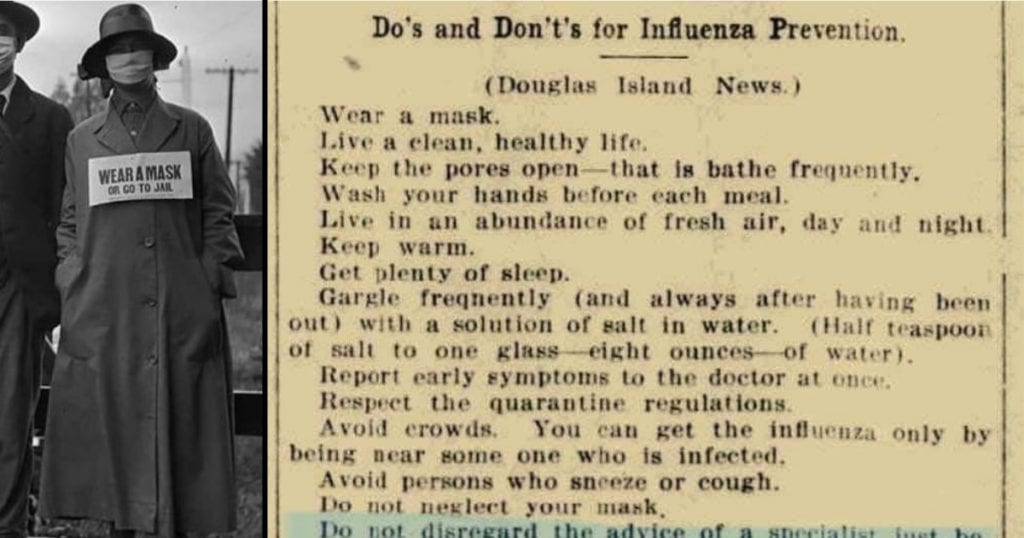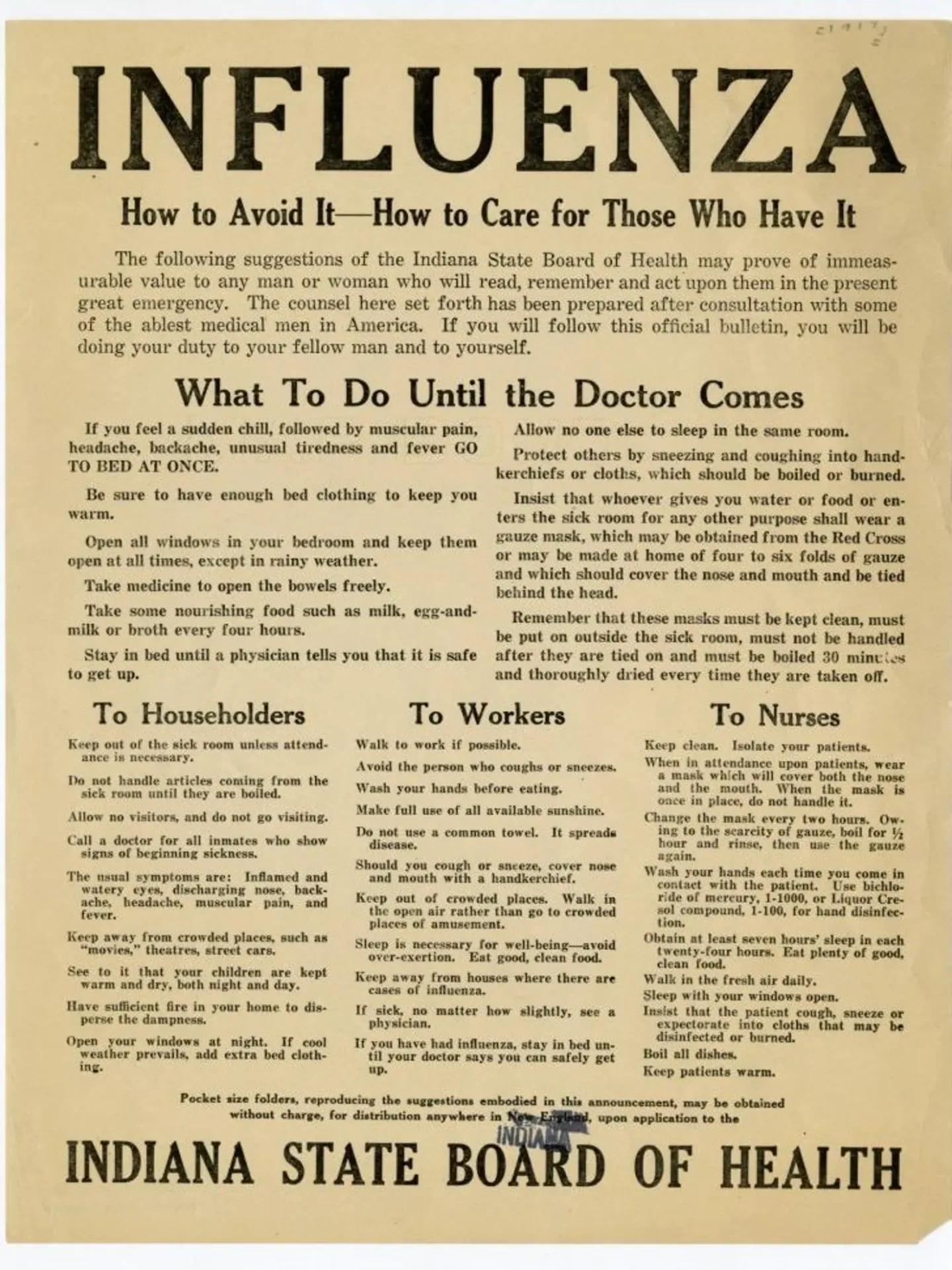Der Einwand war falsch, da Impfgegner meist allgemein von Impfstoffen gesprochen haben und es anfangs bei den Soldaten Experimental-Impfstoffe gegen Gelbfieber gab.
Durch diese Zeitungsmeldung wird klar, daß der Einwand auch aus einem zweiten Grund falsch ist, denn offenbar war der Grippe-Impfstoff schnell verfügbar.
Man hat also bei Soldaten zuerst einen Gelbfieber-Impfstoff ausprobiert, der eine hohe Krankheits- und Sterberate nach sich zog. Nun behauptete man, sie hätten aus Spanien ein neues, gefährliches Grippe-Virus eingeschleppt, darum Masken, Lockdown, Abstand.
Zufällig war schnell ein Grippe-Impfstoff fertig (dank der phorschen Phorscher und Philanthropen), mit dem man gegen die ersten Impfschäden ankämpfte und für weiteren Anstieg der Kranken und Toten sorgte.
Dieses friendly fire der “eigenen” Wissenschaftler hat mehr US-Soldaten und später auch Zivilisten umgebracht als alle Kriege zusammen. Trotzdem ist der Fall bis heute nicht aufgearbeitet. Keiner da, der die Macht und das Geld hat, sich darum zu kümmern. Vielleicht sollte Elon Musk ein passendes Institut kaufen…
Advert for the Anti-Mask Meeting held in San Francisco in 1919
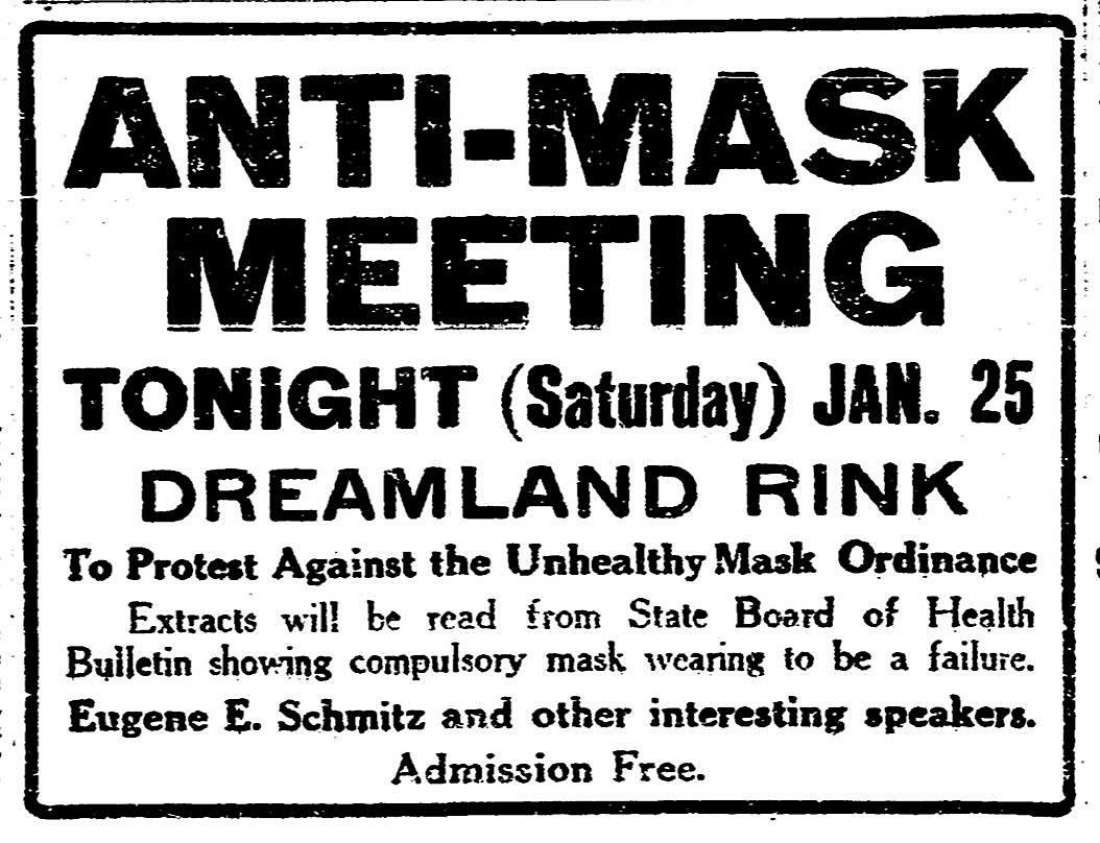
26 Jan 1919; SF Examiner: Anti-Mask Meeting
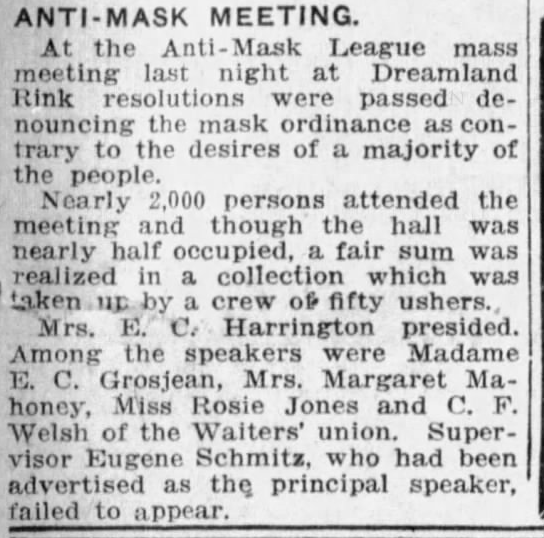
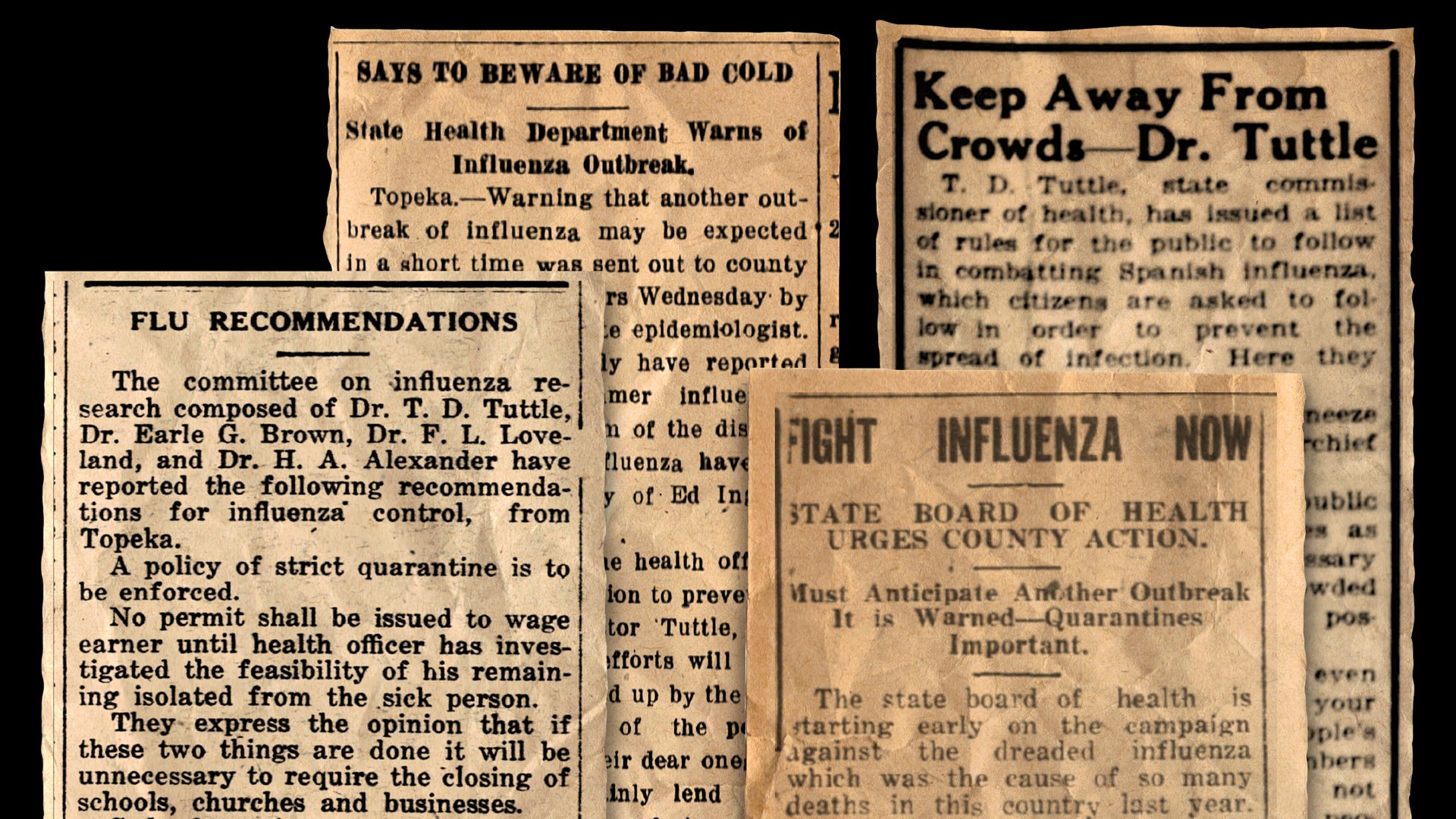
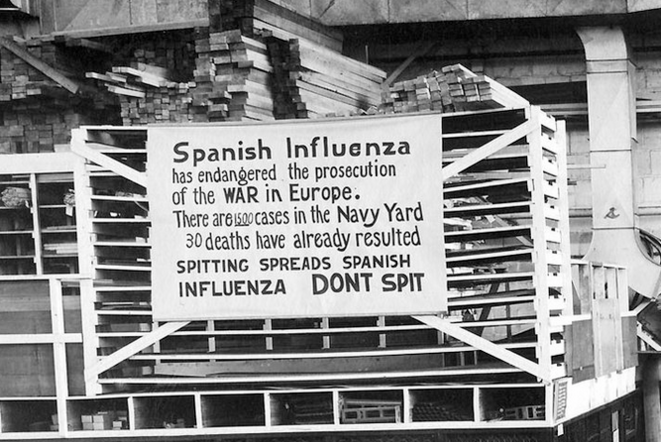
Photo: U.S. Naval History and Heritage Command, fair use.
“The first casualty of war is truth.” – US Senator Hiram Warren Johnson, Progressive Republican from California – 1918
“The question is whether we are to have (vaccine) experiments performed on fully functioning adults and on children who are potentially contributors to society or to perform initial studies in children and adults (and soldiers?) who are human in form but not in social potential.” – Dr Stanley Plotkin, virologist who spent years working at the Children’s Hospital of Philadelphia (CHOP) and the University of Pennsylvania, associate of Paul Offit, credited with inventing the rubella vaccine and an advisor to pharmaceutical corporations
“During the war years 1918-19, the US Army ballooned to 6,000,000 men, with 2,000,000 men being sent overseas. The Rockefeller Institute for Medical Research took advantage of this new pool of human guinea pigs to conduct vaccine experiments.”
“The American Rockefeller Institute for Medical Research and its experimental bacterial meningococcal vaccine may have killed 50-100 million people in 1918-19” is a far less effective sales slogan than the overly simplistic ‘vaccines save lives’.”
“The crude vaccine used in the Fort Riley experiment on soldiers was made in horses.”
“According to a 2008 National Institute of Health paper, bacterial pneumonia was the killer in a minimum of 92.7% of the 1918-19 Pandemic autopsies reviewed.”
“Clean water, sanitation, flushing toilets, refrigerated foods and healthy diets have done and still do far more to protect humanity from infectious diseases than any vaccine program.”
“In 1918, the vaccine industry experimented on soldiers… with disastrous results—but in 2018, the vaccine industry experiments on infants every day. The vaccine schedule has never been tested as it is given. The results of the experiment are in: 1 in 7 American children is in some form of special education and over 50% have some form of chronic illness.”
The “Spanish Flu” killed an estimated 50-100 million people during a pandemic 1918-19. What if the story we have been told about this pandemic isn’t true?
What if, instead, the killer infection was neither the flu nor Spanish in origin?
Newly analyzed documents reveal that the “Spanish Flu” may have been a military vaccine experiment gone awry.
In looking back on the 100th anniversary of the end of World War I, we need to delve deeper to solve this mystery.
Summary
The reason modern technology has not been able to pinpoint the killer influenza strain from this pandemic is because influenza was not the killer.
More soldiers died during WWI from disease than from bullets.
The pandemic was not flu. An estimated 95% (or higher) of the deaths were caused by bacterial pneumonia, not influenza/a virus.
The pandemic was not Spanish. The first cases of bacterial pneumonia in 1918 trace back to a military base in Fort Riley, Kansas.
From January 21 – June 4, 1918, an experimental bacterial meningitis vaccine cultured in horses by the Rockefeller Institute for Medical Research in New York was injected into soldiers at Fort Riley.
During the remainder of 1918 as those soldiers – often living and traveling under poor sanitary conditions – were sent to Europe to fight, they spread bacteria at every stop between Kansas and the frontline trenches in France.
One study describes soldiers “with active infections (who) were aerosolizing the bacteria that colonized their noses and throats, while others—often, in the same “breathing spaces”—were profoundly susceptible to invasion of and rapid spread through their lungs by their own or others’ colonizing bacteria.” (1)
The “Spanish Flu” attacked healthy people in their prime. Bacterial pneumonia attacks people in their prime. Flu attacks the young, old and immunocompromised.
When WW1 ended on November 11, 1918, soldiers returned to their home countries and colonial outposts, spreading the killer bacterial pneumonia worldwide.
During WW1, the Rockefeller Institute also sent the anti-meningococcal serum to England, France, Belgium, Italy and other countries, helping spread the epidemic worldwide.
During the pandemic of 1918-19, the so-called “Spanish Flu” killed 50-100 million people, including many soldiers.
Many people do not realize that disease killed far more soldiers on all sides than machine guns or mustard gas or anything else typically associated with WWI.
I have a personal connection to the Spanish Flu. Among those killed by disease in 1918-19 are members of both of my parents’ families.
On my father’s side, his grandmother Sadie Hoyt died from pneumonia in 1918. Sadie was a Chief Yeoman in the Navy. Her death left my grandmother Rosemary and her sister Anita to be raised by their aunt. Sadie’s sister Marian also joined the Navy. She died from “the influenza” in 1919.
On my mother’s side, two of her father’s sisters died in childhood. All of the family members who died lived in New York City.
I suspect many American families, and many families worldwide, were impacted in similar ways by the mysterious Spanish Flu.
In 1918, “influenza” or flu was a catchall term for disease of unknown origin. It didn’t carry the specific meaning it does today.
It meant some mystery disease which dropped out of the sky. In fact, influenza is from the Medieval Latin “influential” in an astrological sense, meaning a visitation under the influence of the stars.
Why is What Happened 100 Years Ago Important Now?
Between 1900-1920, there were enormous efforts underway in the industrialized world to build a better society. I will use New York as an example to discuss three major changes to society which occurred in NY during that time and their impact on mortality from infectious diseases.
1. Clean Water and Sanitation
In the late 19th century through the early 20th century, New York built an extraordinary system to bring clean water to the city from the Catskills, a system still in use today. New York City also built over 6000 miles of sewer to take away and treat waste, which protects the drinking water. The World Health Organization acknowledges the importance of clean water and sanitation in combating infectious diseases. (2)
2. Electricity
In the late 19th century through the early 20th century, New York built a power grid and wired the city so power was available in every home. Electricity allows for refrigeration. Refrigeration is an unsung hero as a public health benefit. When food is refrigerated from farm to table, the public is protected from potential infectious diseases. Cheap renewable energy is important for many reasons, including combating infectious diseases.
3. Rockefeller’s Pharmaceutical Industry
In the late 19th century through the early 20th century, New York became the home of the Rockefeller Institute for Medical Research (now Rockefeller University). The Institute is where the modern pharmaceutical industry was born. The Institute pioneered many of the approaches the pharmaceutical industry uses today, including the preparation of vaccine serums, for better or worse. The vaccine used in the Fort Riley experiment on soldiers was made in horses.
US Mortality Rates data from the turn of the 20th century to 1965 clearly indicates that clean water, flushing toilets, effective sewer systems and refrigerated foods all combined to effectively reduce mortality from infectious diseases BEFORE vaccines for those diseases became available.
Have doctors and the pharmaceutical manufacturers taken credit for reducing mortality from infectious disease which rightfully belongs to sandhogs, plumbers, electricians and engineers?
If hubris at the Rockefeller Institute in 1918 led to a pandemic disease which killed millions of people, what lessons can we learn and apply to 2018?
The Disease Was Not Spanish
While watching an episode of American Experience on PBS a few months ago, I was surprised to hear that the first cases of “Spanish Flu” occurred at Fort Riley, Kansas in 1918. I thought, how is it possible this historically important event could be so badly misnamed 100 years ago and never corrected?
Why “Spanish”?
Spain was one of a few countries not involved in World War I. Most of the countries involved in the war censored their press.
Free from censorship concerns, the earliest press reports of people dying from disease in large numbers came from Spain. The warring countries did not want to additionally frighten the troops, so they were content to scapegoat Spain. Soldiers on all sides would be asked to cross no man’s land into machine gun fire, which was frightening enough without knowing that the trenches were a disease breeding ground.
One hundred years later, it’s long past time to drop “Spanish” from all discussion of this pandemic. If the flu started at a United States military base in Kansas, then the disease could and should be more aptly named.
In order to prevent future disasters, the US (and the rest of the world) must take a hard look at what really caused the pandemic.
It is possible that one of the reasons the Spanish Flu has never been corrected is that it helps disguise the origin of the pandemic.
If the origin of the pandemic involved a vaccine experiment on US soldiers, then the US may prefer calling it Spanish Flu instead of The Fort Riley Bacteria of 1918, or something similar. The Spanish Flu started at the location this experimental bacterial vaccine was given making it the prime suspect as the source of the bacterial infections which killed so many.
It would be much more difficult to maintain the marketing mantra of “vaccines save lives” if a vaccine experiment originating in the United States during the years of primitive manufacturing caused the deaths of 50-100 million people.
“The American Rockefeller Institute for Medical Research and its experimental bacterial meningococcal vaccine may have killed 50-100 million people in 1918-19” is a far less effective sales slogan than the overly simplistic ‘vaccines save lives’.”
– Kevin Barry

